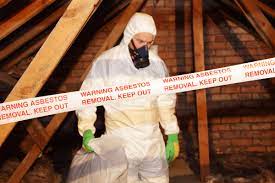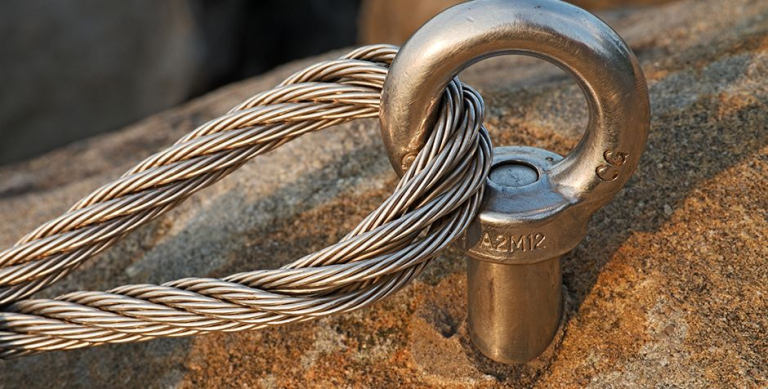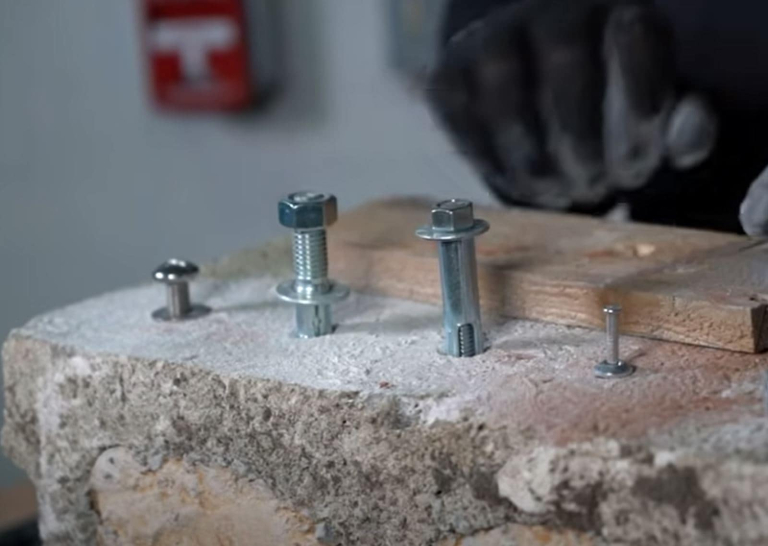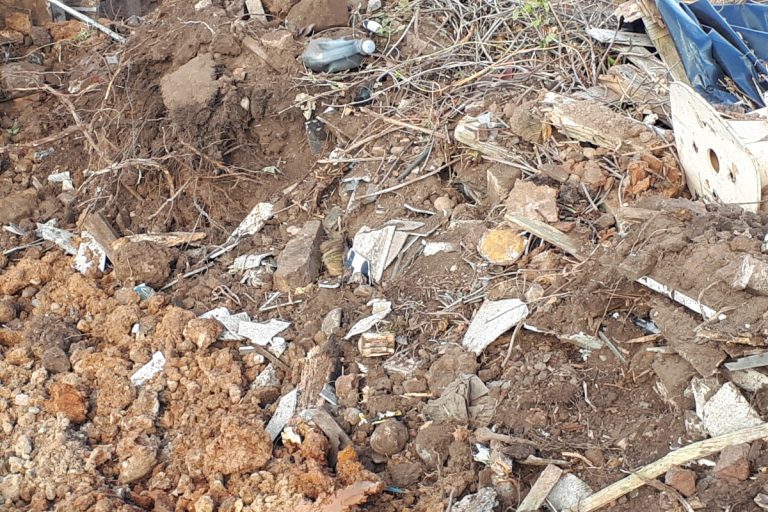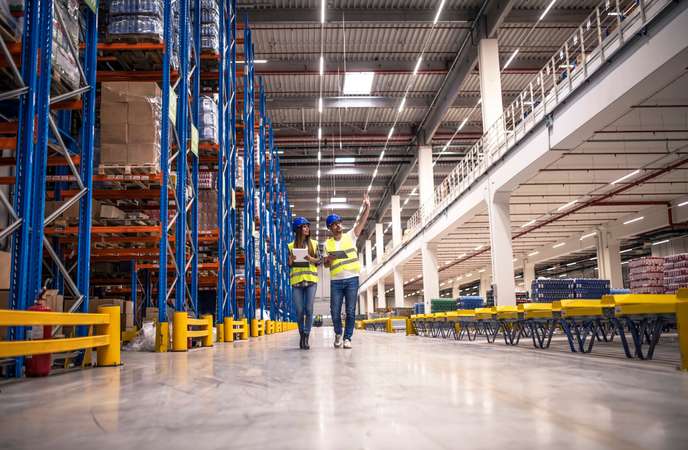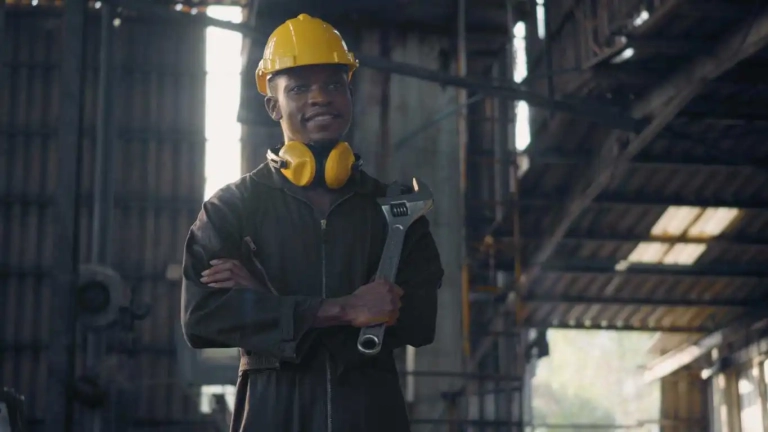What’s the best asbestos ppe to wear?
What is personal protective equipment (PPE)?
Personal protective equipment (PPE) is any clothing or equipment that provides protection to the wearer from a potential risk.
What PPE must be worn when asbestos is or may be present?
If asbestos is or may be present, PPE must include:
- respiratory protective equipment (RPE) – to avoid inhaling asbestos fibres (see our fact sheet on health risks from asbestos)
- overalls which are impervious to asbestos dust (either disposable or able to be washed*) – to avoid the risk of carrying asbestos fibres away from the worksite on clothing
- footwear – appropriate for the work being undertaken (footwear should be non-laced as laced footwear is difficult to clean – alternatively wear disposable boot covers).
* Washing must only be done in laundries specifically set up for handling asbestos- contaminated clothing. It must not be done at home or a public laundromat.
Why is PPE required?
Although controls must be in place to prevent or reduce exposure to asbestos fibres when working with asbestos-containing material (ACM), the asbestos risks must be minimised even more by using appropriate PPE.
Respirators
Respirators are used to purify the air you are breathing. The most common respirator is a half face, dual cartridge respirator. Respirators must be equipped with HEPA filtered cartridges (color coded purple) or an N-100, P-100 or R-100 NIOSH rating. These cartridges are specific for filtering out asbestos fibres.
No Dust Masks!Paper dust masks available at hardware stores do not filter out asbestos fibres and should not be used. Half face respirators cover the nose and mouth and consist of a silicone or rubber face piece, elastic head harness and filter cartridges.
Respirators provide little protection if they do not fit properly. Facial hair, especially beards and goatees, will not allow the respirator to fit properly. Read the instructions thoroughly. If possible, request from the vendor a fit test to ensure a proper fit and instruction on performing a fit check of the respirator seal. A fit check is done each time the respirator is worn.
MEDICAL WARNING: Respirators cause the lungs to work harder in order to breathe air. Check with your doctor before buying a respirator to see if you are physically able to wear a respirator.
Safety GlassesEyewear
Safety goggles or glasses protect your eyes from any falling or flying debris. Eyewear should be used when removing materials from overhead and when cleaning with wire brushes. Eyewear is also recommended during floor tile removal.
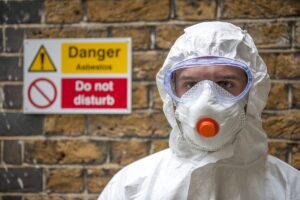 CoverallDisposable Coveralls
CoverallDisposable Coveralls
Disposable coveralls are used to keep asbestos-containing debris off of your body. Several pairs of disposable coveralls with built in feet should be available during the removal work and clean up. It is recommended that two suits are worn at the same time. Every time you leave the work area, once ACM has been removed, the exterior suit should be removed inside the work area and be disposed of in a designated asbestos waste bag. This will help to ensure all asbestos debris remains in the work area. Oversized coveralls make it easier to move around. Most coveralls do not breathe, so you may get hot and uncomfortable. An optional method is to use old clothes and dispose of them as waste at the end of the project.
BootsRubber Boots
Rubber boots are used to protect your feet from any sharp objects encountered during your project. Boots will also protect disposable coverall feet so they do not wear through. Laceless, pull on rubber boots without fasteners are recommended. Boots can be washed off at the end of the project and used again. Check the tread of the boot to ensure no debris is stuck in it.
GlovesDisposable Gloves
Gloves protect the hands from sharp objects and reduce the amount of asbestos contamination on your hands. Several pairs of durable, disposable rubber or cloth gloves should be purchased. Gloves should be worn by each person in the work area. When work is completed, gloves should be disposed of in a designated asbestos waste bag.
ShowerDecontamination
All equipment and tools should be washed prior to leaving the work area. Inspect all surfaces of your safety equipment to ensure no contamination is leaving the work area. In addition to equipment, all exposed skin should be washed off to eliminate any contamination. Any equipment that cannot be cleaned must be disposed of as asbestos contaminated waste.
Using personal protective equipment in conjunction with the appropriate work and decontamination practices can greatly reduce exposure when removing ACM.
Working with asbestos
Asbestos safety requires careful planning. Before working with asbestos, have the right equipment ready to go with your PPE. You need:
- 200 micron thick plastic drop sheets
- duct tape
- wet wipes or disposable cloths
- bucket of water
- water sprayer (hose or bottle with misting attachment)
- non-electrical tools
- 200 micron thick asbestos waste plastic bags
- Signs
- barriers to exclude others from the area
- bin or designated waste storage area.
Do not reuse disposable items – treat them as asbestos waste. Clean and decontaminate shoes, mask, eyewear, and decontaminate the area you’ve been working in.
Disposing of PPE and asbestos waste
After working with asbestos, your disposable PPE is contaminated and becomes asbestos waste. After finishing the work, you need to remove your PPE carefully and in the right order.
You can safely dispose of your PPE and asbestos waste at a landfill licenced to accept asbestos in NSW.
Have a shower afterwards
To remove any dust and asbestos that may be on your body, have a thorough shower after finishing your work. Make sure you wash your hair as well.
It’s essential that you take all the necessary precautions to protect yourself and others when dealing with asbestos. Find out about preparation before you commence the task.
Reference-
Thank you for reading this information about asbestos, we have written an article on the best 30 “Asbestos Removal Melbourne” Companies. Please take a read.
https://www.asbestossafety.gov.au/

